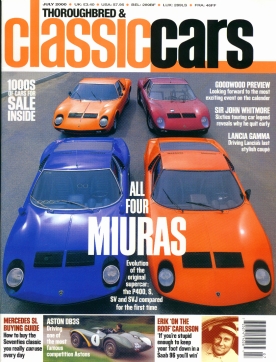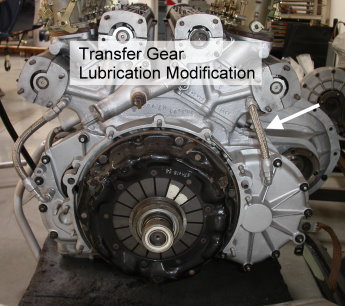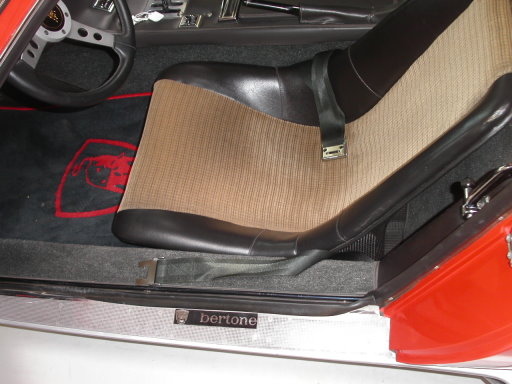General Miura Information
This section of the site gives general information on the Miura, its variants, and one-offs. I'll try not to repeat too much history that is easily accessible from many places, but add details and photos from my personal experience. As always, I welcome your suggestions.
The first question often asked (other than "How fast does it go?") is "What are the differences between the various models of Miura?" In all the books and magazines I have read I have yet to see a definitive description. The July 2000 issue of Thoroughbred & Classic Cars gives a very superficial description, but falls far short of being any kind of reference.
 |
T&CC says there are four models of Miuras. It may be a matter of opinion. True, the factory did make five SVJ cars, modeled cosmetically after Bob Wallace's Jota. I prefer to group those five in with the Jota and the Roadster/ZN-75, and only recognize the P400, S, and SV cars as factory production models.
The simple answer is, there are three versions of the Miura: The P400, the S, and the SV. However, the cars within these versions are not all the same because changes were constantly made during production. Each version can be divided into two
series, often called "Early" and "Late" series cars, with distinct differences:
- Early P400
- Late P400
- Early S
- Late S
- Early SV (single sump)
- Late SV (split sump)
It is difficult to draw a line between the early and late versions since there is no one car that is the last "early" version with the next car rolling off the assembly line being the first "late" version. Instead, the changes were applied over a range of serial numbers so there are interim cars with a mix of early and late features.
|
When trying to identify a Miura as being an early or late model, or even a P400, S, or SV, the classification is complicated because many owners (and even the factory) have upgraded cars with newer features. I know of one P400 that was upgraded to an SV by the factory, and at least two SV's with some P400 features (eyelashes and driving lamps). My own P400 is being upgraded to an S so thoroughly that it will be very difficult to tell it's not a factory S. Serial numbers are not definitive, since there are factory S cars with lower serial numbers than mine. Also, be wary of photos in books. Almost every Lamborghini book I have (and I have many) misidentifies one or two photos. For details on the evolution of the Miura, click the links in the left menu.
Do Changes Affect the Value?
With most collector cars, the more original, the more valuable, but the collector world has been divided on how this applies to the Miura. Almost from the start, Miura owners updated their cars with the latest improvements from Sant'Agata. At one point my car had its wheels and rocker panels painted gold, certainly because factory SVs had gold wheels and rockers. (All P400s and S's had silver wheels and rockers.)
For decades Miuras were upgraded with improved chassis modifications, vented brakes, split engine sump, etc. Applying a factory upgrade faithfully to a car truly improves the car, making it more comfortable and beautiful while improving the handling and reliability.
A very few engineers, including Al Burtoni in California and the legendary Bob Wallace in Arizona, continued to improve Lamborghini engine designs (not just duplicate factory upgrades), such as extending or "dropping" the oil pan, adding oil sump baffles, and adding oil sprayers to lubricate the transfer gears. Even these upgrades seem to add value.
 |
Added lubrication for starter gears and transfer gears, done by Bobileff Motors. |
I know of only one functional upgrade which is of questionable financial value: Substituting large Brembo/Porsche brakes (see MovIt North America and MovIt's Lamborghini page). Even so, it is rumored that one of the factory Jota replicas was given Porsche brakes by Lamborghini.
I've belonged to Lamborghini clubs since the late 1970s (I think I'm member #5 in Jim Kaminski's Lamborghini Owner's Club - probably the oldest Lamborghini club in the world), and I've gathered with Miura fans longer than that. It has always been common to hear people ask if a Miura had any upgrades. It has only been in the last couple of years that completely original cars (especially interiors) have gained a certain aura of respect, probably because so few exist.
 | Original Miura S interior
(Except for the floor mat). |
In summary, condition being equal, upgraded cars are generally more valuable than original cars, provided the upgrades bring the car to newer factory specifications or add safety. The more improvements on a Miura, the better and more valuable the car. So upgraded P400s are more valuable than stock P400s (and may be more valuable than an S in poor condition). The same can be said for upgraded S cars. It's hard to get better than an original SV. Since they were the last model and most advanced, they remain the most desirable of the Miuras.


